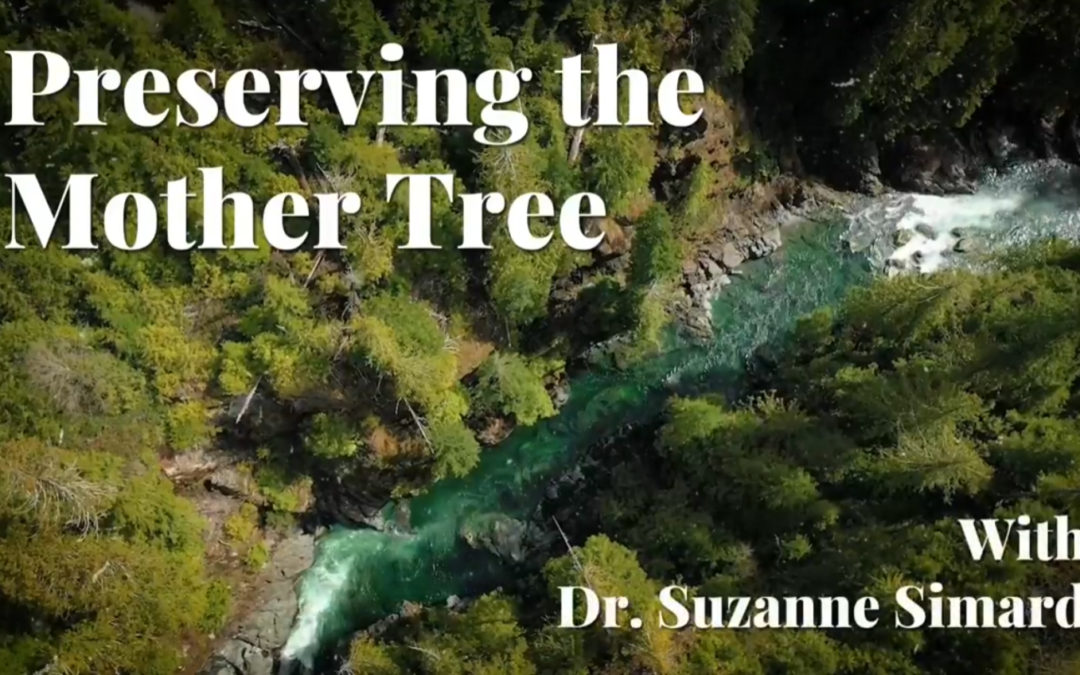When I logged onto Suzanne Simard’s presentation last Wednesday, my picture of old-growth forest was of huge, towering trees, draped in lichen and moss, sheltering birds and animals – a beautiful picture from the ground up. At the end of Suzanne’s one-and-a-half hour session, I came away with a whole new picture: an image of deep, black humus, up to a metre deep, packed with fungal mycelium, tiny insects eating and excreting, all of them working together to help the whole ecosystem function.
When Suzanne goes into the Ada’itsx/Fairy Creek watershed, as she did last Tuesday, she doesn’t just look up at the towering giants; she gets out her shovel and starts to dig. In the heart of the remaining old growth, in Granite Main, she digs a pit through the humus that goes down a metre. All that rich soil, built up over centuries, is part of the system that fixes carbon, that sequesters and stores it from the atmosphere.
The Fairy Creek forest stores 1,300 kg/hectare of carbon, more than even the rainforest of the Amazon. Suzanne tells us that at Ada’itsx/Fairy Creek, when we add up all the stored carbon, it’s equivalent to 1,000,000 tons of CO2 – three years of carbon emissions from the City of Victoria. Victoria is trying to reduce its emissions with limited success; we could have met our goal just by stewarding our old-growth forests.
Suzanne moves onto a patch that was logged 100 years ago and digs another pit – 33 cm of humus. Then the kicker: the 15-year-old Douglas fir plantation has only 4 cm of hummus. When you clearcut coastal forest, you lose 80% of the humus. Heavy machinery compacts and moves the soil. The mycorrhizal community – all those underground species – are reduced from 100 species per hectare to six. And we lose about 70% of the stored carbon.
The underground story was just part of what I learned from Suzanne’s presentation. I found out that the role of lichens (including that blue-listed old growth specklebelly lichen) is partly moisture control. Lichens suck up the rain during the rainy season and release the cooling moisture during periods of drought, keeping the forest always cool and moist. I learned that an old-growth forest is like a family – a community of organisms all living in harmony and balance. And I learned during the question period that the daily government subsidy to logging companies – the money that we taxpayers pay to support old-growth destruction – runs to the multi-millions.
I came away from Suzanne’s presentation more determined than ever to keep hammering away at this incorrigible government, hell-bent on a path of destruction. You can watch Suzanne’s presentation, The Disappearing Mother Trees, here.

Thank you Susan for your beautifully written summary of Suzanne Simard’s presentation on Ada’itsx/Fairy Creek and ancient forests. I watched the presentation after reading your post and am forwarding it to others. Such a clear, strong and wise message and so infused with love ….. for the forest, for all the life it supports and for the lives that are defending it.